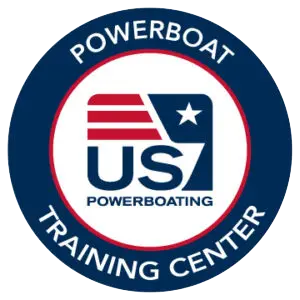Overview
Whether you’re looking for your first experience at the helm or aiming to improve your skills, our goal is to empower students with the skills and confidence they need to get more out of their boating experience and become more comfortable at the helm. This course is an international US Powerboating class.
Prerequisites
No prerequisites are required for this class.
Certification Requirements
Certification requirements include successfully completing the following knowledge and skill requirements with a confident and safe command of the boat in light to moderate conditions. Stronger conditions are acceptable if you can safely control the boat with an awareness of limitations in these conditions. You will safely operate a cruising powerboat of at least 26 feet in length.
Topics Covered
On-the-water Instruction:
- Preparation: Weather, currents, safety systems, VHF radio, basic knots
- Docking: arriving, departing, line-handling, speed control, shifting techniques
- Navigation: Aids to Navigation, charts, symbols, Rules of the Road
- Boat Control in Open Water: Speed control, steering a compass course, high-speed maneuvering
- Anchoring: Dropping anchor, retrieving anchor, anchor scope
- Emergency Procedures: VHF radio in emergency situations, man overboard drills
- Securing a Boat: Secure boat to dock, boat cleaning, securing hatches & ports
Classroom Instruction:
- Preparation: Weather information sources, float plan, trip planning
- Systems: Part of a boat, electrical systems, engine systems
- Powerboat Theory: Hull shapes, effects of wind & seas, turning radius
- Docking: Alternatives for different wind conditions, line handling, basic knots
- Navigation (Piloting): Avoiding collisions, Navigation Rules, lighting requirements
- Boat Control in Open Water: Handling wakes, handling wind & waves, handling adverse weather
- Emergency Procedures: Safety devices & aides, fire fighting, avoiding accidents, rendering assistance
- Anchoring: Types of anchors, recommended scope, anchor setting theory



